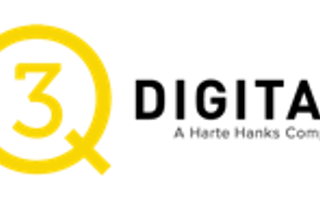By Aaron Bart, VP of Creative Services
A few days ago I was searching online for a gift for my wife. She likes handmade artistic jewelry, so I did some searching and clicked on a few ad links that seemed to be in line with what I was looking for. One landing page I was taken to had spectacular photography of models wearing bracelets and necklaces with sparkly names like "The Isis" and "The Juniper Berry", organized in "galleries" that had equally fancy names. Alongside each product were long flowery descriptions that took up much of the page. I spent a good amount of time browsing the products and enjoyed reading through each of the descriptions. But in the end I didn't buy anything from this site.
Later that day I saw some similar-looking jewelry on Pinterest, clicked on an image of an artsy-looking bracelet, and was taken to a pretty basic looking site, that had very simple but clean navigation, product detail pages with compelling customer reviews, with short and simple descriptions of each piece that weren't very flowery but told the story of the jewelry. And there was a big prominent "Add To Cart" button right in my line of vision. The shopping cart experience was also flawless and easy, and when it came time to enter my credit card information I felt safe seeing the TRUSTe, Verisign, and McAfee trust marks right there next to the Submit button.
The design of the first site was fantastic, with its expensive looking professional photography and its flowery product description copy. I enjoyed that experience immensely. But in the end, the more basic site, with intuitive UX design and more relevant content got my money. The creators of the second site here most likely have performance data to support the choices they made in the design of the site UX. And they likely run creative testing to optimize the UX for conversion and revenue KPIs.
PERFORMANCE- BASED UX DESIGN
When approaching the UX and visual design of a site or landing page, what truly matters is conversion: does the site or landing page have the right content, layout, design, and user flow to compel a visitor to take the action we want -- whether that's making a purchase, filling out a form, or even just interacting with some page content. One of the greatest challenges for marketers, and for the performance media agencies that support their digital advertising efforts, is how to optimize creative against specific performance metrics or KPIs.
ROLE OF DESIGN IN PERFORMANCE MEDIA
What should the role of design be when it comes to performance media? And more importantly, what should the creative team's role look like within a performance media agency, and how do we leverage design effectively for greatest impact on our clients' bottom lines? For an agency focused on driving ROI for our clients in paid search, social, display, and investments in SEO, the most immediate role of the creative team is to support these efforts through creative development and production of campaign assets such as ad units, landing pages, websites and apps. But beyond that tactical role I believe the creative services team can play a key role in campaign strategy and performance, and be a center of innovation within the agency.
LEVERAGING BRAND STORY AND VOICE IN PERFORMANCE CREATIVE
Each brand has a unique story, along with assets such as logo, mission and voice, product history and positioning, that are core to the content of its creative. Its the job of the branding agency to create a compelling brand story, to establish a memorable brand voice & personality and extend that into a brand's product or service value proposition. The focus of the creative team at a branding agency is on crafting a compelling value narrative, and positioning that narrative within the competitive landscape so the brand stands out and succeeds in the market (though I will argue in a subsequent blog that the job of crafting the brand's value narrative is shifting to the performance media agency's creative team).
The creative team at a performance media agency is then tasked with taking that carefully crafted brand narrative, and designing targeted ads and landing page experiences that are oriented toward specific campaign goals and KPIs. Successful campaigns depend not only on the design of those performance assets (ads, landing pages) but on the initial brand identity and voice -- the stronger and more memorable the brand story, the more effective the assets will be in market. Strong brand voice, and the value story of the brand's products will have the greatest and most measurable impact through performance media when:
- Persona and target audience segments are clearly defined and mapped to user flows
- Campaign KPIs are clearly defined and aligned with business goals
- Campaign messaging clearly and effectively articulates brand and product value proposition
- User experience design of campaign landing pages and e-commerce sites are optimized for conversion.
And performance creative isn't something we set and forget, it is something to be actively managed: it is an ongoing iterative process through CRO, with live A/B and multivariate testing driving ongoing improvements to performance. And with the non-stop flow of tests results and user data/analytics back into the feedback loop, we are constantly improving our UX designs, our content, even the brand story itself. And this is something all marketers need to be doing, to keep up with the always-on conversation with our customers and prospects. And ultimately to drive it.
Strong data-driven performance creative is key to the success of any digital advertising, whether we are leading the marketing charge on the brand or the agency side. And because the results of good UX design are measurable, we need to always have close alignment of media, brand and creative.







